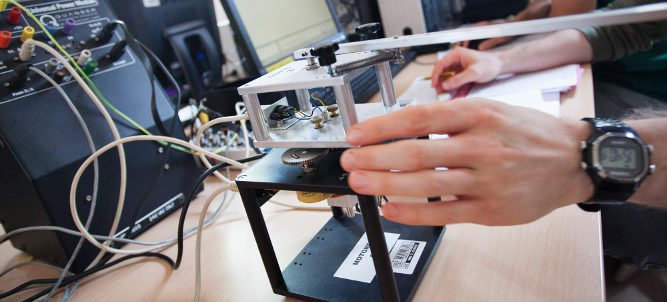Microelectronics for the human health care
Submitted by zennaro2 on
- Study of the interface betweed microelectronics and biological materials: analysis of the effects og biological components on electrical and optical parameters, using both numerical modeling and different transduction strategies, e.g., electrochemistry and plasmonics.
- Devices for biological analysis and investigation: design, study, developments and characterization of new integrated microsystems able to actively and passively interact with biologic substances, in order to improve biological analysis techniques for the detection of specific target molecules.








